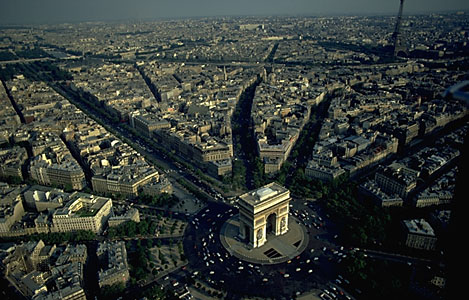John Ruskin (1819-1900) was one of the first writers to use the term 'Modern' in a more positive light than had been used up until that point. Up until that point, the term was synonymous with deviation from tradition, and often used as a pejorative. Ruskin had a different view. He saw the contemporary artists of the time, such as William Holman Hunt, as a fresh alternative to more classical forms of art, and had a place alongside of it in terms of value and merit. This kicked off a debate as to whether the modern world could ever live up to classical culture, which to many in the upper echelon of society was seen as the peak of civilisation.
The idea of the 'modern being better than what came before took root in the cultural consciousness with an explosion of new technologies at the turn of the 20th century. Urbanisation and mass industrialization in the western world led to a sort of perceived compression of the world, with the expansion of the railways travel became more widely available to the masses, proliferation of communication technologies the world becomes more negotiable and with the aid of new technologies, people's perceptions of time changed form the rising and setting of the sun to the ticking of the factory clock. Time becomes standardised and in the modern world people are the dominant element on the planet. This coupled with the leaps in philosophy and scientific thinking of the time has led to historians catergorising this period in history as an enlightenment, marking the transition from a society at the behest of god to a secular world run by people and technology.
The city was where people lived out their newfound modernist fantasies, with mass migration from rural areas to the inner cities. In developed nation, gothic architecture is dwarfed by mechanical monuments, symbols of the triumph of the enlightenment. Out of this the term 'modern' carried almost universally positive connotations. Artists began to create art depicting these new modern cities, famously Caillebotte, with 'Paris on a rainy day' (1877) which showcased the positive impact of modern living. City architects, such as Hausman ripped out the narrow streets and run down housing in favour of larger boulevards, partially to make the cities easier to police, one of the ways in which modernists employed social control.
Not everyone was convinced however of the universal positivity of modernism. Max Nordan in his book 'Degeneration' published in 1892 was decidedly anti-modernist...
'The end of the 20th Century will probably see a generation to whom it will not be injurious to read a dozen square yards of newspaper daily'.
-Max Nordan, Degeneration
Modernism had a profound effect on classical art forms. Photography overtook Painting as the primary way of depicting the world. In response, some traditional painters opted to become more abstracted and focused on the material of the paint, while others attempt to emulate photography, with more radical compositions, such as for example Caillebotte's 'The Boulevard viewed from above' (1880). New urban spaces gave artists new views of the world both figuratively and literally, and new technologies gave them new ways to perceive and interpret.
Modernist design philosophy can be described as Anti-Historicism ('Ornament is Crime', Adolf Loos, 1908), while true to materials, focusing more on geometric forms appropriate for the materials, with function taking precedence over form. While western centric, most modernist design has a focus on Internationalism, or rather a neutral, utopian, but also western view of the world. Swiss Type and Modernist Architecture influenced design worldwide, reflective of the rise of globalism and global capitalism following the end of WWII.
Miles Van Der Rohe's Seagram Building in New York, built in 1958, served as a template for hundreds of similar monuments to modernism throughout the world.
As my essay for Context of Practice is on the subject of Postmodernism in relation to Animation, an understanding of Modernism as a utopian concept is required to make any substantial points. In that sense, today's lecture was useful in informing the content of my essay. Modernist design ideas, I feel have their merit, particularly in the realm of Typography and Graphic Design.





No comments:
Post a Comment